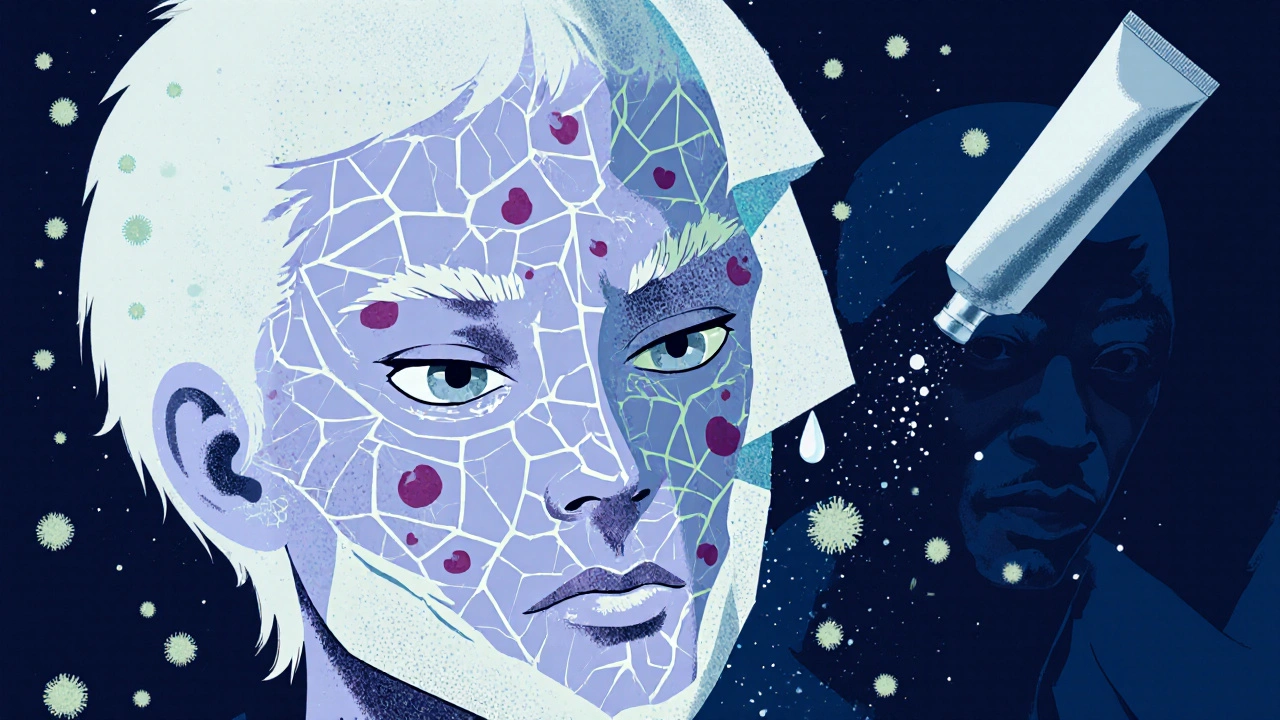Topical Steroid Withdrawal: Symptoms, Causes, and What to Do Next
When you stop using topical steroids after months or years, your skin can go through a painful reaction called topical steroid withdrawal, a condition where the skin becomes inflamed, red, and burning after discontinuing long-term steroid use. Also known as red skin syndrome, it’s not an allergy—it’s your skin’s way of reacting after being suppressed for too long. This isn’t rare. People who used steroid creams for eczema, psoriasis, or even mild rashes for years often wake up one day to find their face, neck, or arms bright red, hot, and itchy—sometimes worse than before they started the cream.
What makes this so confusing is that steroids work fast. They calm redness, shrink bumps, and stop itching in days. But your skin starts relying on them. When you stop, your body doesn’t know how to regulate inflammation on its own. That’s when skin rebound, the flare-up that happens after stopping steroid creams kicks in. It can last weeks or even months. Some people report their skin feels like it’s on fire. Others get oozing, peeling, or swelling. It’s not just physical—it messes with sleep, confidence, and daily life. And because many doctors don’t recognize it, patients are often told it’s just a flare-up or an infection, and given more steroids. That only delays recovery.
Topical steroid withdrawal doesn’t happen to everyone, but it’s more common than you think—especially with stronger steroids used on the face or sensitive skin. It’s tied to how long you used the cream, how strong it was, and where you applied it. People who used hydrocortisone daily for years on their cheeks, or clobetasol for scalp psoriasis, are at higher risk. Even over-the-counter creams can cause this if used too long. The good news? Your skin can heal. It takes time, patience, and stopping all steroids completely. No more creams, no more quick fixes. You’ll need to manage symptoms with gentle skincare, cool compresses, and sometimes antihistamines for itching. Some find relief with oatmeal baths or fragrance-free moisturizers. But there’s no magic pill. Recovery is a process, not a product.
Below, you’ll find real stories and practical guides from people who’ve been through this. You’ll see how others managed the flare, what helped their skin recover, and how to avoid common mistakes. Whether you’re just starting to suspect steroid withdrawal or you’re months into it, these posts offer clear, no-nonsense advice—not theory, not marketing. Just what works.

Skin Atrophy and Infections from Topical Corticosteroids: Risks, Signs, and Safe Use
Topical corticosteroids can cause skin thinning and infections with long-term use. Learn the signs of atrophy, how to prevent it, and what to do if you're already experiencing damage.
October 28 2025